Expected Butterfly Visitors
After years of gardening, it is easy to become routinized to the birds, insects and small mammals common to this area. Like so many of you I have always been entranced by our local butterflies. So far this year I have seen yellow swallowtails( Papilio glaucus – Family Papilionidae) and black spicebush swallowtails ( Papilio troilus – Family Papilionidae) .
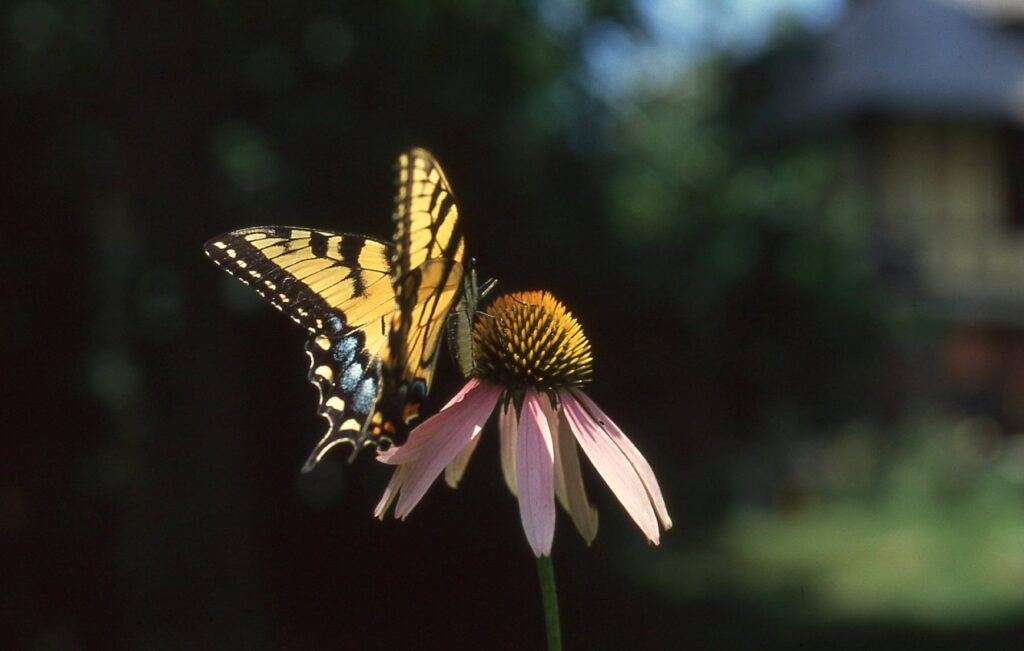
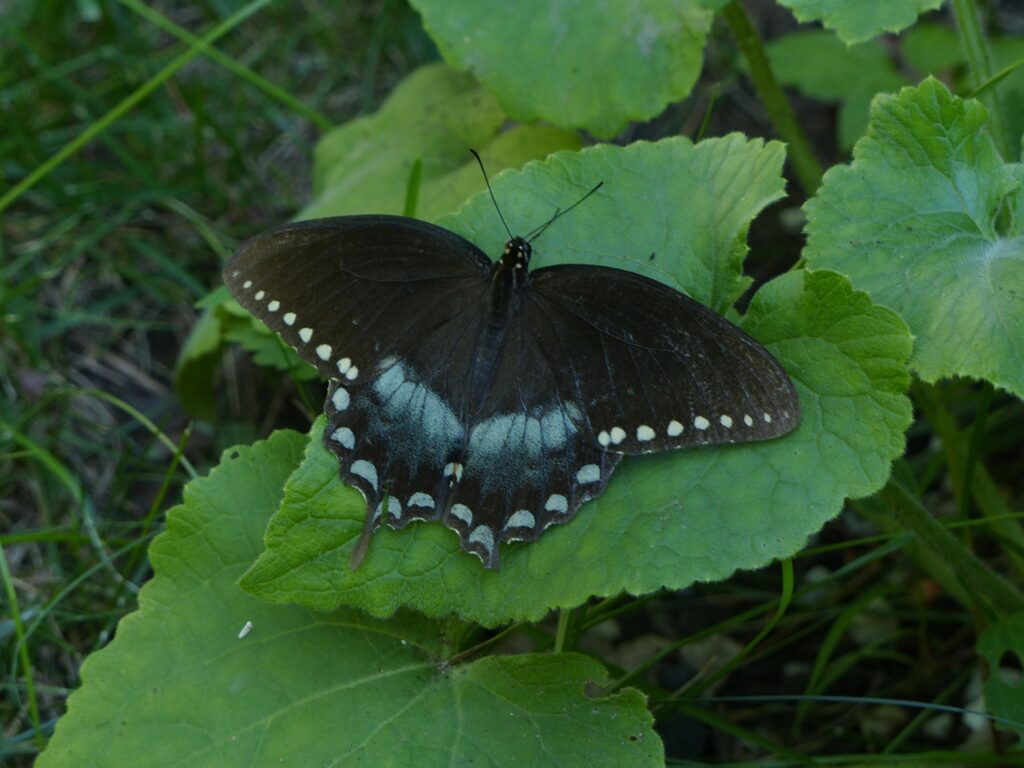
I am also familiar with the common white butterfly -the cabbage white ( Pieris rapae –Family Pieridae) . The cabbage white is not a particularly colorful butterfly.
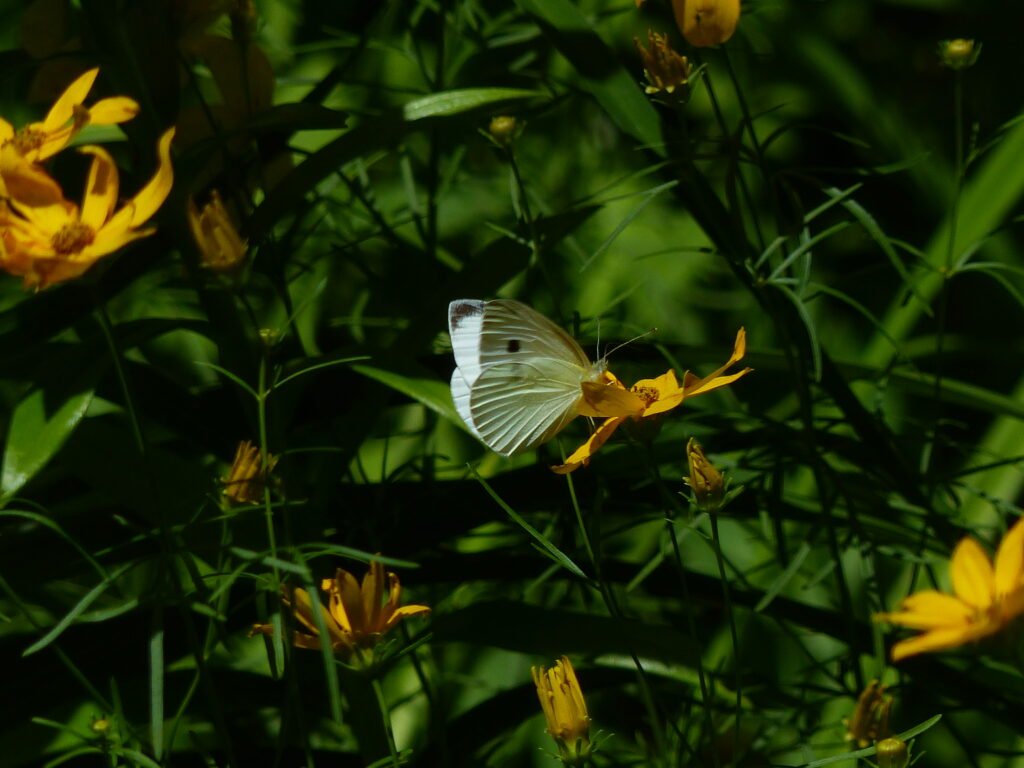
Our World is not Static
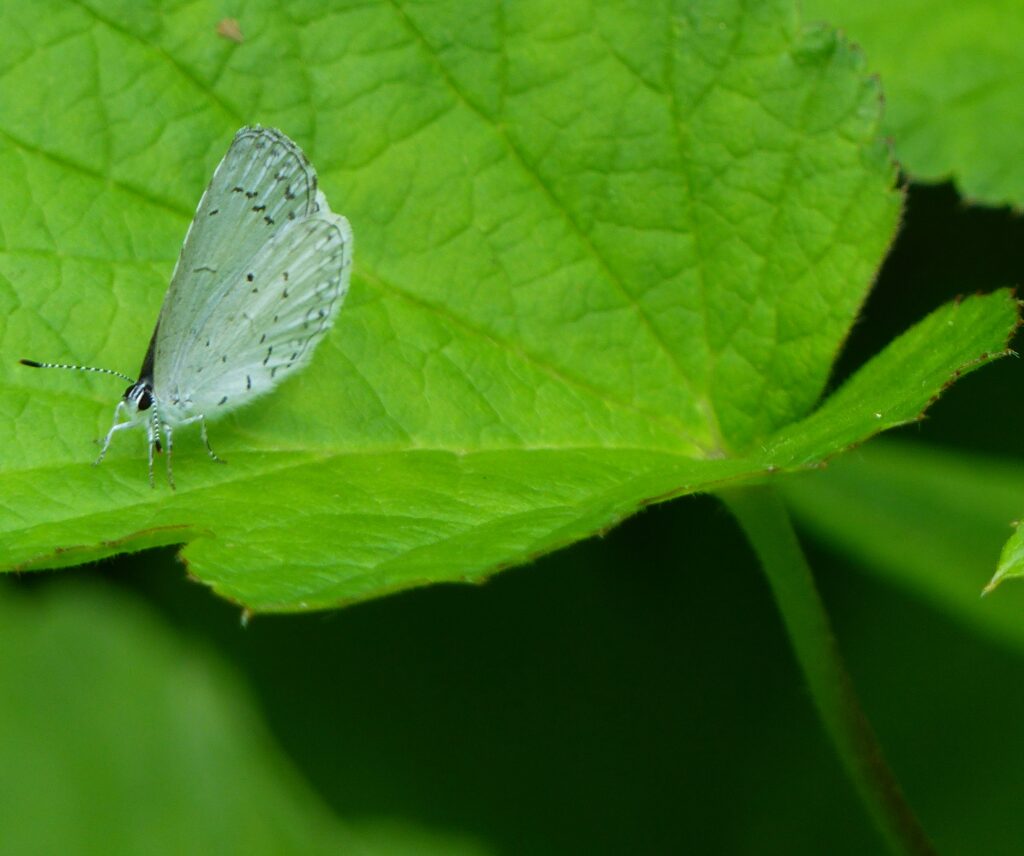
Recently, however, something small and white flew by me and alighted on a large leaf of the Japanese Fall Anemone (Eriocapitella hupehensis ). While it could have been a Cabbage White, this new visitor to my garden seemed just a bit different. I also had the distinct impression that the upper surface of the wing was not white but a light lavender.
Identifying Plants and Wildlife
When in doubt about an identification, the easiest path to follow is to send a photo to iNaturalist through their app. The identification in this case that quickly came back was the Holarctic Azures, Family Lycaenidae Genus Celastrina. Holarctic means roughly all the landmasses of North America as well as Eurasia north of the Himalayas together with North Africa and the temperate part of the Arabian Peninsula.
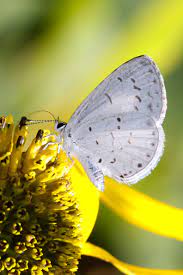
Their suggestion as to the most likely species is the Summer Azure, Celastrina neglecta. The literature, however, says that the topside of the C. neglecta wing is colored blue and I thought that I saw a flash of lavender.
Check this out yourself. Based on these photos I would guess my visitor is a male C. idella.
The real problem is that the underside of the wings of the various Celestrina species can be remarkably similar. Unless the butterfly is relaxing with its wings opened, the defining characteristics of the upper wing cannot be seen.
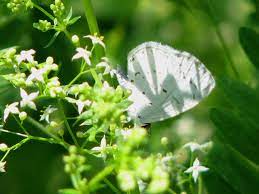
Based on the fact that I saw the butterfly in mid-June, the reasonable suggestion is that it is a Celastrina serotina. Different species make their appearance at different times during the warm months.
Anyone know a lepidopterist?

If you have enjoyed this essay, you may enjoy my book, A Habit of Seeing: Journeys in Natural Science.